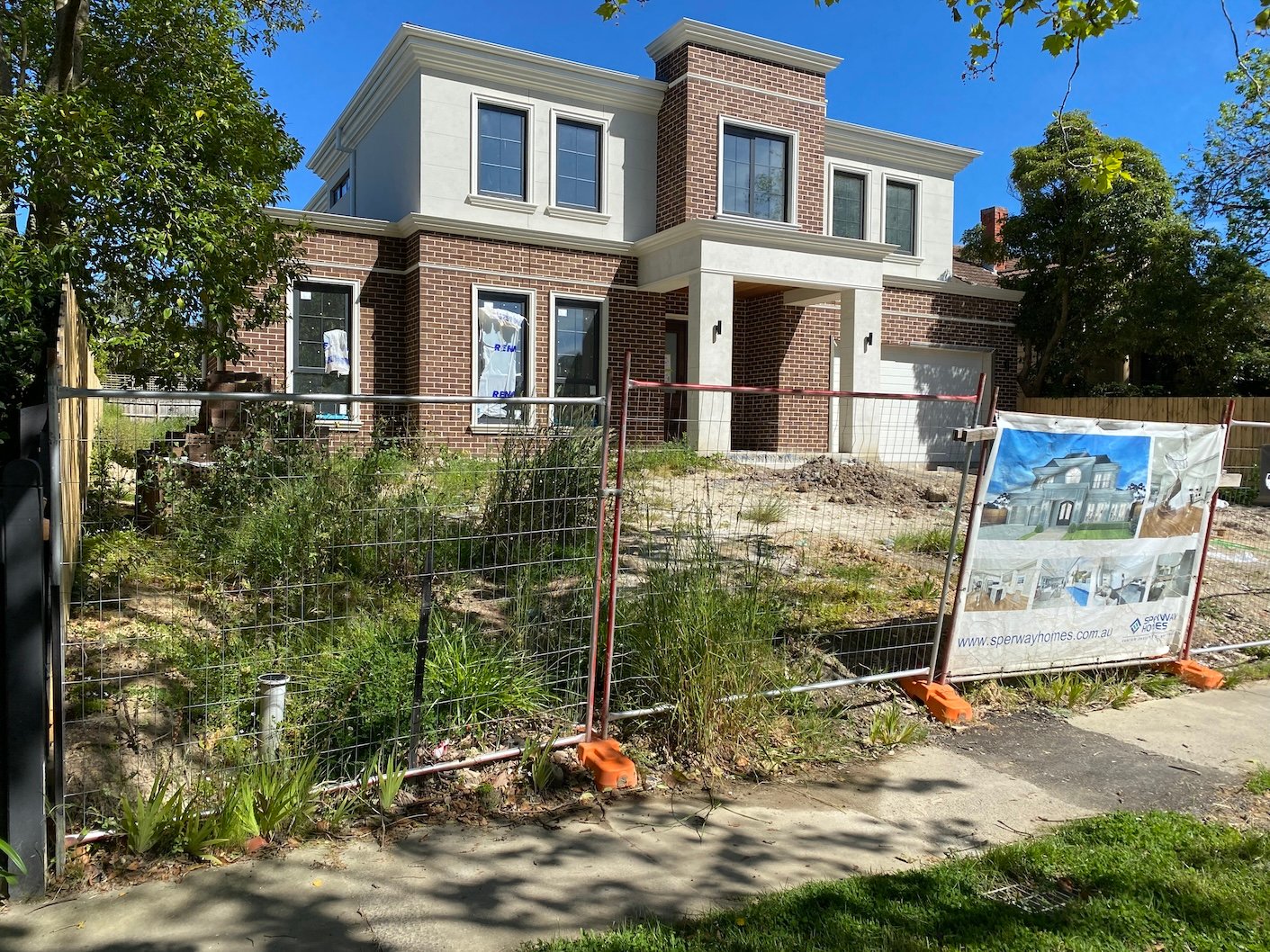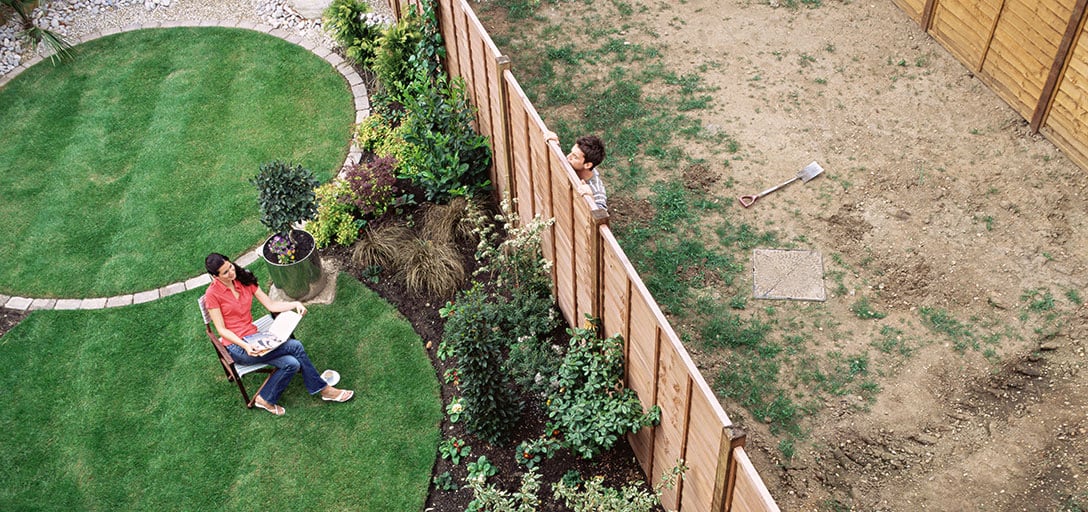What follows after your landscape master plan is complete?
March 15th, 2024
12 min read
By Andrew Whyte

Do you have a wonderful design for your new garden in your hands? Are you feeling like your landscape designer or landscape architect has captured everything you wanted in your new garden? Are you finally starting to feel like this ideal garden you've been dreaming of may now actually happen? Can you feel a rising sense of excitement or anticipation?
But do you now have that little voice in the back of your head asking "OK, so what happens next?"
We have designed and created more than 500 gardens all over Melbourne & the Mornington Peninsula over the past 30 years. So we have a very clear idea of exactly what happens between the design phase and the beginning of the landscaping works. We know all the steps, stages and challenges you might face over the next few months. But more importantly, we know many of the ways to overcome them.
We hope that by the time you get to the end of this article, you will feel more relaxed and comfortable about "what happens next". And you will see a clearer path that leads you to your ideal garden.
Important note: while we are a fully integrated landscape design and construction company that takes your whole project from conception to completion, many landscape design companies only do the garden design and hand you off to a landscaper who will actually build it. We've tried to write this article so it covers both scenarios.
Apart from anything else do you have a lot of questions in your mind right now? Questions like "Is there anything that needs to be done before the landscaping work starts?". "What permits will we need?" "Who liaises with the council?" "I've got an easement on my property, what does that mean?"
Let us take you through the process one step at a time.
The first step after the Master Plan is complete
Your Master Plan provides all materials and plants, and a landscaping quotation can now be created from it.
If your project is relatively simple, there may be very little required before a landscaper can get started. However, what we are finding these days is that projects are becoming more complex. At the same time, so are the rules and regulations regarding them. You may not realise it, but essentially, landscaping these days has to follow the same regulations that govern building a house. Please understand this so that you set the right level of expectations before your landscaping project begins.
The good news is that generally we do most, if not all, of this first stage not you. (As a completely integrated landscape design and construction company, it's our job to handle all this for you. If we can't do it ourselves, we bring in the relevant experts to get the work done.)
Some of the key actions that may need to be done at the Master Plan stage include the following:
- Working drawings created for anything that needs constructing - decks, pergolas, etc
- Discovering whether an Engineer needs to be assigned to the project
- Which of the (sometimes many) Council permits will be needed?
- Will an Easement application be required to construct something over the easement?
- Does the project require a Building permit?
- Do we need to locate where all the utilities are?
- How and when will the landscaping contract be drawn up?
We have found this stage can sometimes be the most emotionally draining of all stages. Mainly because it tends to make you feel you are being stopped. There you are, all keen and revved up to get your garden started and all you seem to run into is "No, you can't do that until you do this..." It can be frustrating because you want to get going but you can't until you're given permission to.
The other reason it can be frustrating is that despite our long experience we never really know in advance how long the approvals for any particular project will take. We've seen council applications take 3 weeks to be approved. But we've also seen them take 3 months! It depends on the council, the individual processing the application and the unique aspects of the project itself.
Often, one stage can't proceed until an earlier stage has been completed. So it might take 2-4 weeks for an engineer to do their work. Then your application goes to the council, which takes another 6 weeks. But then the building surveyor takes 3 weeks to do their part. When you understand how the processes work, it's easier to see how timeframes can get blown out.
Remember, we handle all of these steps for you, so you don't have to do the work, but it's important to have realistic expectations. Having the right team working on your applications helps and we will always try to find ways to speed up any step we can, but some steps unfortunately, fall under the category of "it takes as long as it takes"!
Wherever we can, we will always design in a way to avoid unnecessary steps, to shorten processes where applicable and even to avoid needing permits, where the regulations allow.
Working Drawings created by the designer
In almost all cases, before a landscaper can start working on a garden, they need more than just a plan of the garden design that shows an overhead view of all the elements. They also need what are called 'Working Drawings' from the designer.
Working drawings have dimensions. They also have levels or heights of various garden elements. Additionally, they may need to show sectional views (like cross-sections) that show 'how' something is to be constructed.
If the design incorporates something like a pergola, the designer will suggest things like the timber beam and post sizes, the types of timber being used, the span between the rafters, etc.
The front fence will need details of its height, width, setback from the street, etc.
The other reason for needing working drawings is when they are required by the engineer for example. They may also need to be passed along to the council, water authorities, or the building surveyor to be used in the process of issuing permits.
 Here you can see an example of a section of working drawings.
Here you can see an example of a section of working drawings.
This design shows the location of decking stumps used to obtain a building permit.
The landscaper looks at these drawings to understand how something is to be built to code.
What happens when a designer can't legally create working drawings?
While working drawings are often needed for landscape projects, there is one scenario where they cannot legally be done by the landscape designer or landscape architect. This is whenever a building permit is required for a garden project, which is very common.
The regulations state that a landscape designer is not usually authorised to create the working drawings that are needed to be used for a building permit application. However, if you have engaged an integrated landscape design & construction company that will use the working drawings for in-house landscapers to build from, then the working drawings are considered to be for 'internal use only'. This rule applies to any of our projects.
However, if you are using a landscape designer who is not part of the same company that will build the project, then you or the designer will need to employ an external architect or draftsperson to create them.
When you might need an engineer
There can be many situations where your project will require an engineer to become involved. If they are, then this can add an extra step to the whole project.
Projects where engineers will need to be involved can include those that contain:
- Footings for a street brick fence.
- Footings for retaining walls. (Generally only when they are over a metre in height, but also where soil conditions dictate it)
- Footings for a pergola or verandah
- Decking where the frame is to be attached to the house may require an engineer to show how this will be done, or even stumps may need to be specified
- Pergola and/or verandah structural beam sizes and spans, etc.
- Concrete slabs that are suspended above ground level or on unstable soil conditions, etc, etc
 To the left, you will see steel reinforcing specified by an engineer and inspected by a building surveyor.
To the left, you will see steel reinforcing specified by an engineer and inspected by a building surveyor.
This is a typical footing that needs engineering before landscaping can take place. It also needs a building inspector to carry out multiple inspections during landscaping.

To the right, you will see the completed wall that now sits on those footings.
What council requirements may be needed?
Some people have likened the world of council requirements to a world of black magic and mysteries. (OK that 'some' people are us).
The truth is, that despite our 30 years of history in dealing with councils all over Melbourne, the knowledge we have on one project with one council may bear no resemblance to the experience we have with the same council on another project!
There are some fundamental rules and guidelines to follow and these are generally quite clear.
For example, if you wish to build a pergola, verandah or decking within a metre of your boundary, this will likely flag a need to apply to the council for a permit to do this.
If you wish to build above a certain height of fence on your boundary, this will flag one too.
 To the left, you will see a wall along the footpath. This home in Glen Iris is Heritage-listed.
To the left, you will see a wall along the footpath. This home in Glen Iris is Heritage-listed.
This wall had to be built exactly as it was before, and even the paint colour had to be approved.
Luckily, the front garden had no restriction, but that isn't always the case.
If you are doing work on the boundary to a laneway or you are causing the levels of a garden, deck or anything else to increase to the point where someone could now overlook their neighbour, then you may need a permit for that too.
If you are planning to build within the tree zone of a 'significant tree' you will need to fill out an application.
The list goes on. Now, while these are some of the rules and regulations, the truth is, there can be surprises when dealing with the council. That's because you are dealing with people who work at the council, and each can bring their own particular bias or viewpoint to any situation. So one may tick a box and say, NOT REQUIRED. But the next time you go to the same council and deal with a different person, they may ask you to jump over several hurdles first. The simplicity is that whoever they are, they do have the authority to interpret the rules as they see fit and dictate what needs to be done.
On several occasions, we have applied for a building permit from our building surveyor only to be told, "So, the council have said, they want such and such", which has taken us completely by surprise.
Let us share a case history to illustrate some of the things that can happen.
In all our years of working in this industry, we have only ever been asked to apply to the council for heritage listing permits for work in front gardens. But at the end of 2023, a project we were working on required us to ask the council for a permit for work we were conducting in the rear garden of the property. (The permit was for a recycled brick wall 450mm high that included a planter box and bench seat. The home is heritage listed, but we had never been asked to apply for a permit for a rear garden before.)
For another project, we were working in an inner-city suburb, installing a new carport door that opened out onto a laneway. The council were concerned we would damage the loose-laid bluestone pavers in the laneway so at first they simply said we had to get a permit just to work on the door. Then they said they wanted us to apply for an Asset Protection permit as the laneway was council property. Then they wanted us to apply for another permit, which they said (after 6 weeks mind you) was actually the wrong permit so we had to fill out another application form and pay another application fee!
We only raise these points to give you real-life examples of what can happen when dealing with council. Despite our best efforts, sometimes when dealing with council life just doesn't go according to plan.
If you can set your expectations correctly, you will not be as disappointed or frustrated.
How easements can be a complicating factor in garden design
An easement is typically a piece of your land that has been set aside for sewerage pipes and stormwater pipes. The reason it is set aside and has restrictions and controls on it is that the relevant authority, such as the council or water authority, may wish at any time to access the land to dig up and repair or replace the pipes.
Often, there will be nothing built on this piece of land for the need of access. Most commonly, an easement will be a 1.8m stretch of land across the rear boundary of the property. But occasionally, you can see 3 easements on the one property, one along the rear and one on each side.
How can easements affect you and your plans for a new garden?
Well if you wish to build a pergola or retaining wall, or pave over an easement, you will need to find out first if a permit is required. Now, if your easement contains a sewerage drain, you will need to apply to the council to carry out the works. If it has stormwater drains in it, you will need to apply to the relevant water authority. In some cases, where there is both sewerage and stormwater pipes, you might need two applications. Or you might just need two applications anyway.
You may even need to apply for a permit when you are planning works that are outside the easement but close to the drainpipe within the easement, so this is another factor we might need to take into consideration for you.
How is all this likely to affect your project? Well, if we're planning to build a pergola, deck or retaining walls over your easement, the concern is that our digging deep into the ground may damage the drainpipes. While sewerage drains are often laid at over 2.5m deep, we have often been asked to take particular actions to avoid potentially damaging the drainpipes.
Additionally, we are often required on projects involving easements to engage a plumber to come to the site and locate exactly where the drainpipes are because existing records don't accurately show this.
Issues with locating utilities - the forgotten factor
As well as locating sewerage and stormwater drainpipes on easements, it can often be necessary on landscaping projects to locate where the gas, water, electricity, stormwater, and sewerage pipes actually run on the property.
This is to avoid damaging them when commencing the landscaping works. In each case, the exact location needs to be sourced either from records or through on-site location work by a qualified person. Where the pipe or other utility runs is then marked out on the site to avoid damage.
Again, this is another step that can add more time to the project.
In some cases, the utility may even need to be relocated, which can be an expensive and time-consuming process. (We won't know if it needs to be moved until we know exactly where it is and how it might affect the work on your garden.)
In one case, we were creating a new garden for a client in Balwyn North that included a swimming pool. We discovered a large stormwater pit on the site that would be too close to the swimming pool. So we had to apply for a permit to relocate it. This work had to be done by a plumber. So not only did this whole process add considerable time to the project, it also cost a further $10,000.
Additional preliminary steps before landscaping
If there's any rule that applies to landscaping, it's that every job is different. Every client is different. Every council is different. And every set of circumstances is different.
So that can require any number of additional steps beyond what is normally expected in a landscaping project.
For example, your project may require a Boundary Survey to be carried out to identify exactly where your boundaries are. We are never surprised to discover they are wrong, as this is more common than most people think. On a project in Kew several years ago, our client discovered through a Boundary Survey that their rear boundary was over a metre out! Luckily, it was in their favour.
An arborist's report may be required to identify the condition of any tree on a property or if that tree is considered significant and would therefore need to be retained. Arborists may also be required to report on whether the root zone of any significant tree will be impacted by the landscaping project.
Asbestos is another issue that may need to be addressed. Sometimes old sheds or cubby houses on older properties may contain asbestos. If they do, they need to be inspected and removed using a special process to ensure no asbestos dust is spread during the removal. Another time-consuming and expensive process.
Finally, your landscaping project may involve the installation of very specific elements that come from specialist suppliers. For example, an outdoor kitchen, louvre pergola, swimming pool, etc. Each one of these can take time to be sourced and accurately estimated.
Signing your landscaping contract - the final step
The final step between designing the garden and commencing the landscaping work is the signing of the landscaping contract. It is the final step because generally, no work can commence until this is done.
Usually, you won't be asked to sign the contract until all the above steps are at least known about, even if they are not finalised. But sometimes it is also necessary to push ahead with the work, while some of the paperwork is still being completed. This can be because if you had to wait for every box to be ticked, every application to be completed, every permit to be granted, and every other little detail attended to, you might add several months to a project.
If you're keen to get underway, you can sign the contract so long as you have identified all the major challenges to be faced in the project and your landscaper is confident and capable of overcoming them all.
But there are also many circumstances in which you need to sign the landscaping contract BEFORE some of the permits will be granted. For example, a building surveyor will ask for a copy of the contract before supplying a building permit. For this reason, we can't actually apply for one until the contract is signed.
With most larger and more complex projects, we will often go through all the above steps first to ensure we have all our 'ducks in a row' so to speak. We will also check if the design is fully correct and ready to go, and that all costings are correct so that variations to the quote can be avoided where possible. We will do all this before asking you to sign a contract.
The benefit of working with an integrated landscape design & construction company
Now that you know a lot more about all the steps that need to occur between the designing of a garden and the commencement of creating it, there is one final step you might need to ask yourself.
You need a landscape architect or landscape designer to design your garden and create a Master Plan. Then you need a landscaper to actually build the garden. So who is going to take care of all those preliminary steps in the most efficient way possible?
Well, you could choose a landscape designer who only designs gardens and hands the design over to you to find your own landscaper. But now you might be left wondering how many of these preliminary steps might end up falling in your lap.
If you are after a seamless process that bridges from design, across all the preliminaries, and finally gets all landscaping work done, you need a fully integrated landscape design and construction company like us.
We operate across greater Melbourne and the entire Mornington Peninsula.
Related articles to help you understand more about Landscape Design and Construction in Melbourne...
How many stages does it take to design & landscape a new garden?
Who's responsible for managing contractors in a landscaping project?
How to compare quotes from different landscapers
If you have any more questions about anything raised in this article please feel free to contact us. We are more than happy to answer them by phone or email. Simply visit our contact page here.
Founder of Whyte Gardens






